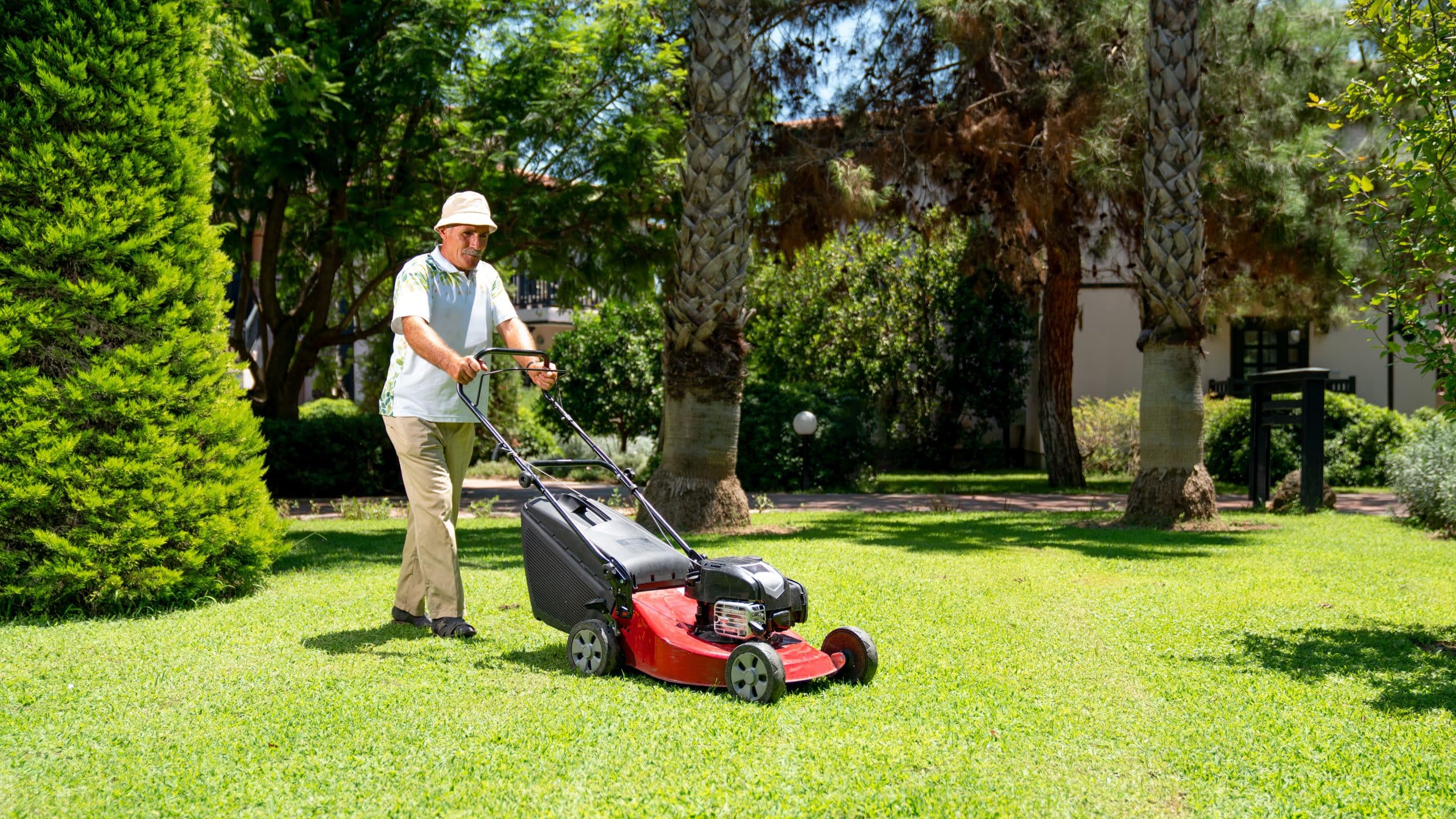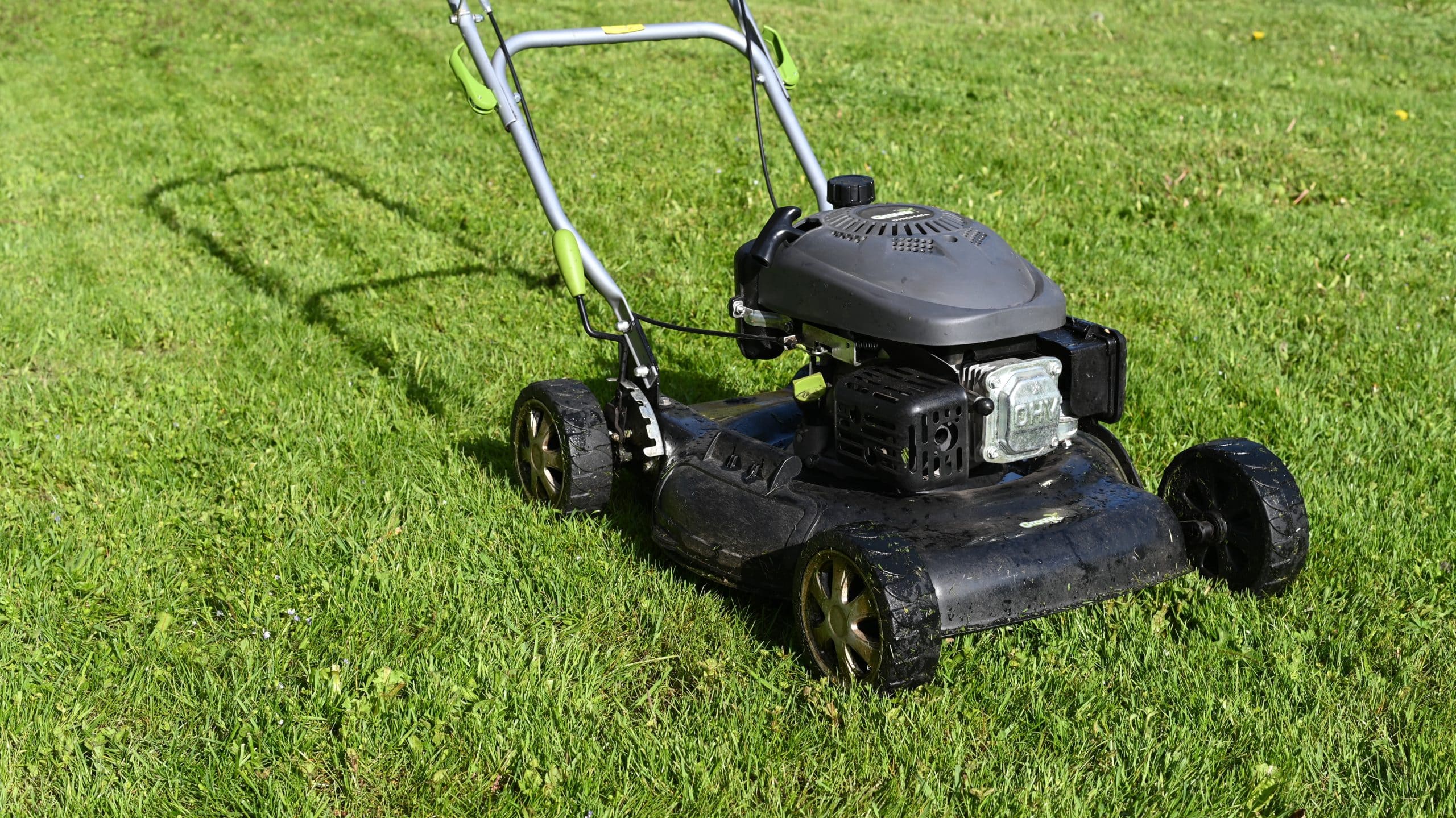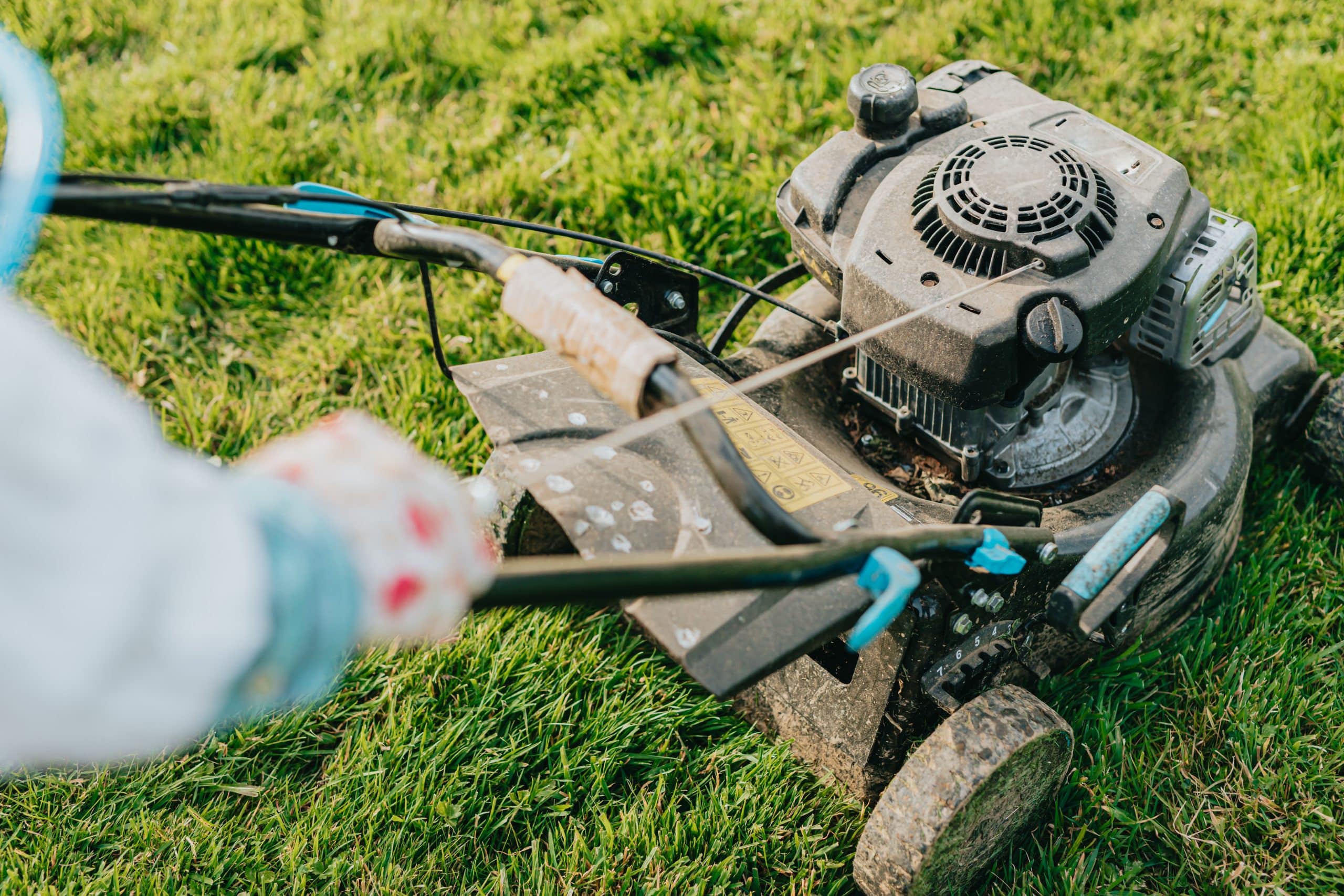Table of Contents
Now, is your lawnmower starting to resemble your unruly toddler and misbehaving? While there could be several culprits as to why your once perfect mower is now acting up, the most likely cause is the carburetor.
Now I know what you are thinking. You are asking yourself, “What is a carburetor, and where in tarnation is it located?”
Well, don’t worry, that is the question we are here to help you out with. And by the end of this article, you will be armed with more carburetor knowledge than you will ever need.
Understanding the Role of a Carburetor on a Lawn Mower
We can all picture you now scratching your head and staring at your lawnmower, wondering what this pesky carburetor is and how the heck you can get back to mowing.
Well, your carburetor manages the flow of air and fuel to your engine. It mixes these two up to create a perfect blend for combustion. But here’s the catch – if it gets clogged with dirt and debris, your mower might start acting up. So, keep your carburetor clean to keep your mower singing sweetly.
Types of Carburetors and Their Differences
There’s a wide variety of carburetors out there, each with its own unique features. The main parts of the carburetor include the carburetor housing and the jets, but the material and design can vary. Stay tuned; we’ll dive into the most common types next.
Standard Bowl Carburetor
First up, we have the standard bowl carburetor. This old-school design has a metal housing and keeps the fuel in a small bowl ready for action.
Modern Plastic Carburetor
Then there’s the modern plastic carburetor. This bad boy is lighter and not prone to rust like its metal counterpart. It’s slick, it’s efficient, but it also needs regular cleaning. Just don’t use anything too abrasive on it, or you might end up with scratches and a sad-looking carburetor.

Locating the Carburetor on Various Lawn Mower Types
Now that you know what a carburetor does and all about its different types, let’s talk about the variety of lawnmowers and their kind of carburetor.
Finding the Carburetor on Riding Mowers
Alright, if you’re dealing with a riding mower, you’re in luck. These big boys usually have the carburetor on the side of the engine, right under the hood. To locate the air filter, just undo the hood latches and take a look. You might need to remove the air filter housing to access it, but it’s not a big deal.
Accessing the Carburetor on Walk-Behind Lawn Mowers
For the walk-behind mowers, it’s a slightly different story. The carburetor is connected to the air intake and air filter, usually located on the side of the mower. Whether it’s a front-wheel drive or a rear-wheel drive, or even an electric walk mower, the process is similar. Find the air filter, remove it, and voila, there’s your carburetor.
Carburetor Position by Brand
Now, let’s talk about brands. You might have a particular brand of mower sitting in your garage. Maybe it’s a John Deere or a Craftsman, or perhaps a Husqvarna. Each brand has its own unique design, and yes, the carburetor’s size and position can vary a bit from model to model. But don’t worry; once you’ve got the basics down, you’ll be able to find the carburetor, no matter the brand.
Identifying the Carburetor on a Push Mower
Finally, we come to the push mowers. Finding the carburetor on these machines is like finding the prize in a cereal box. It’s there; you just gotta dig a little. The carburetor is usually located behind the air filter, but your owner’s manual can give you the exact location. A word to the wise: always keep that manual handy.
Locating the Carburetor on a John Deere Mower
Your John Deere mower has a carburetor that’s a tad bit tricky to find. This little gadget, known as the needle valve, is often tucked away in a spot that’s not immediately visible. The needle valve is part of the carburetor, and typically, you’ll find it under the hood, close to the air filter. Now, get to it!
Finding the Carburetor on a Husqvarna Mower
On a Husqvarna mower, the carburetor is usually located behind the air filter. So to find it, you’d first remove the air filter housing. But before you start tinkering around, remember – when in doubt, check the owner’s manual. It’ll give you a detailed rundown of where everything is placed and how to access it.
Where to find the Carburetor on a Craftsman Mower
The carburetor on a Craftsman mower can be a bit elusive if you don’t know where to look. The good news is that the owner’s manual has a treasure map that’ll lead you straight to it. Usually, it’s nestled near the engine, sometimes under the hood or next to the air filter. With a little patience, you’ll find that carburetor quicker than you can say “Craftsman.”
Briggs & Stratton Mower Carburetor Location
In case you’re wondering where the carburetor is connected on Briggs & Stratton walk-behind mowers, it’s usually close to the side of the engine. So, next time you’re giving your machine a once-over, take a peek under the hood. You’ll find that carburetor hiding there, like a secret ingredient in your lawn-mowing recipe.
Spotting the Carburetor on a Walbro Mower
On a Walbro mower, the carburetor isn’t too hard to spot. Look for a bowl shape under the carburetor body near the combustion chamber. That’s your carburetor, right there. It’s got a conventional gas bowl that’s easy to spot once you know what you’re looking for. Just remember, safety first. Don’t go poking around while the mower’s running.

Importance and Process of Cleaning Your Mower’s Carburetor
Just like you wouldn’t let your car run on bad gas, you shouldn’t let your mower’s carburetor get all gunked up either. It’s connected to the gas tank and needs a good scrub every now and then as part of your annual maintenance. Cleaning it isn’t just about keeping it shiny; it’s also about preventing accidental rolling and other problems. Look for signs of rust around the carburetor intake and the bowl gasket. After cleaning, make sure to reinstall the carburetor correctly.
Recognizing the Signs of a Dirty Carburetor
How do you know when your carburetor on a lawn mower is crying out for a little TLC? Well, your mower might start guzzling more gas. That’s increased fuel consumption right there. Or, the engine might start stalling. If your mower is doing either of these things, it might be time to roll up your sleeves and give that carburetor a good cleaning.
Step-by-Step Guide to Clean the Carburetor
Now that you know how to spot a dirty carburetor, let’s talk about cleaning it.
Procedure to Remove the Carburetor
Before you can clean the carburetor, you’ve got to remove it. Start by shutting off the fuel valve so you don’t end up with a gas bath. Then, remove the engine cover by undoing the screws. Once that’s done, you can slide out the carburetor with a gentle sliding motion. Remember, it’s not a race. Taking your time here means less chance of damaging anything.
Best Practices to Clean the Carburetor
Alright, now that you’ve removed the carburetor, it’s time to give it a good scrubbing. Use a carburetor cleaning solution to dissolve the gunk and grime. Don’t forget to clean the little holes known as jets. Once done, let it air dry completely before reassembling.
Diagnosing and Resolving the Common Carburetor Issues
Carburetor problems can be a real pain, but they’re usually pretty easy to spot. If your fuel system is acting up, or you’re seeing a lot of dirt and debris in your gas, you might have a carburetor issue. The good news is that most of these problems can be fixed with a little elbow grease and some attention to the internal parts of the carburetor.
How to Determine if Your Carburetor Requires Repairs?
So, how do you know if your carburetor needs more than just a cleaning, like actual repairs? Start by checking the usual suspects. If you’ve already cleaned the carburetor and you’re still having carburetor problems, you might need to visit an engine repair shop or get a carburetor repair kit. Lawn mower maintenance can feel like a chore sometimes, but it’s cheaper than buying a replacement carburetor every time something goes wrong. So put on your detective cap and get to investigating!
Troubleshooting Common Carburetor Problems
So, let’s talk about some of the usual carburetor problems that might pop up.
Solutions for Blocked Jet
Now, one of these carburetor problems could be a blocked jet, kind of like when you get something stuck in a straw. And just like with a straw, you’ve got to get that junk out. Using a small wire or a can of compressed air can dislodge that blockage. Clean that baby out, and you’re good to go.
Leveraging Gas Stabilizers
While we’re at it, let’s talk about gas stabilizers. These are like the vitamins for your mower. Adding a stabilizer to your fuel can keep it fresh and help your carburetor run smoother.

Ensuring Safety While Dealing With Carburetor
Look, I know you’re probably itching to get in there and fix that lawn mower’s carburetor. But let’s be smart about it. Like my grandpa used to say, “Safety first, sonny.” So don’t go touching that carburetor right after you turn off the mower. Give it a minute to cool down, or you’ll end up singing your fingers. And nobody wants that, right?
Importance of Gloves and Disconnecting the Spark Plug Cable
Another thing, always remember to disconnect the spark plug cable before you start. Why, you ask? Well, this innocent-looking little thing can make your mower spring to life when you least expect it. Like a jack-in-the-box but way less fun.
And always use gloves. Not only do they keep your hands clean, but they also prevent any accidental burns or cuts.
Lastly, make sure you’re working on a flat surface. You don’t want your mower playing a game of seesaw while you’re trying to work on it.
Frequently Asked Questions
1. How frequently should I clean mower’s carburetor?
So, a lot of folks ask me, “How often should I clean the carburetor?” Well, that’s like asking how often you should clean your house. It depends. If your engine is stalling, there’s smoke coming out, or your fuel consumption seems high, it might be time to give that carburetor a good cleaning. Basically, keep an eye on it, and if it starts acting up, give it a good clean.
Concluding Insights
Now, you’ve got all the know-how on locating and maintaining that pesky carburetor on your lawn mower. Remember, it’s typically hidden behind the air filter, sitting pretty near the engine. Make sure you check this fella out a few times a year, as wear and tear from dirt and debris can make it cough and sputter. Sometimes you might have to replace the carburetor. It’s not as daunting as it sounds, trust me.
But remember, always consult your lawn mower’s manual before fiddling around. Happy mowing!

I’m John, a “seasoned citizen” and an avid gardener. I live in Minnesota, where our weather and growing conditions can be harsh and challenging. Over the years, I have learned a thing or two about being successful in growing things. I have curated these tips, which I think are helpful for the beginning gardener and the seasoned experts. If you have feedback, let me know in the contact form.




